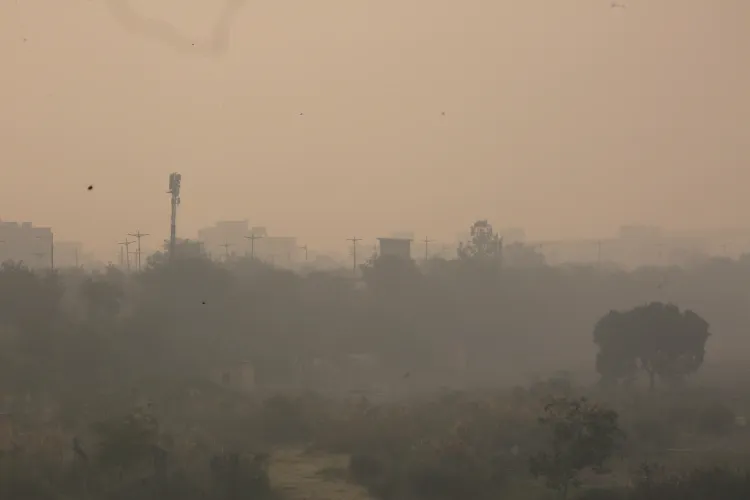Is Delhi-NCR Suffocating Under Smog as AQI Surges Over 400?

Synopsis
Key Takeaways
- Delhi-NCR is experiencing severe pollution levels with AQI readings above 400 in various areas.
- Health advisories warn against prolonged exposure to poor air quality.
- The combination of fog and smog is worsening visibility and air quality.
- Residents are encouraged to wear masks and limit outdoor activities.
- Contributing factors include low temperatures and vehicular emissions.
New Delhi, Nov 9 (NationPress) The residents of Delhi-NCR were enveloped in a dense layer of smog on Sunday, as the Air Quality Index (AQI) plummeted into the ‘very poor’ category across various regions of the metropolitan area. In certain locations, the situation escalated, with AQI values entering the ‘severe’ zone.
The Central Pollution Control Board (CPCB) revealed that the 24-hour average AQI was recorded at 361. Alarmingly, 24 out of 39 monitoring stations in the area indicated AQI levels exceeding 400, marking an unprecedented pollution spike for this season.
Among the stations, Wazirpur (424), Bawana (424), and Vivek Vihar (415) reported particularly concerning figures.
The most impacted areas included Rohini (435), Nehru Nagar (426), Bawana (426), RK Puram (422), and ITO (420). The average AQI was calculated at 391 in Delhi, 391 in Noida, 366 in Greater Noida, 387 in Ghaziabad, and 252 in Gurugram.
On Saturday, CPCB data already identified Delhi as the most polluted city in India. Nearby NCR cities reflected a similar crisis, with Noida (354), Greater Noida (336), and Ghaziabad (339) also indicating hazardous air quality.
The latest report from the India Meteorological Department (IMD) forecasts a minimum temperature around 13 degrees Celsius for the upcoming week. The cold winds during mornings and evenings are augmenting the winter chill, while rain is not anticipated, leading to foggy weather.
Health advisories suggest that extended exposure to such detrimental air quality can heighten the risk of lung and respiratory diseases, particularly among children, the elderly, and those with asthma or heart issues.
The IMD noted that the increasing pollution levels are associated with declining temperatures, which cause the air to become denser and reduce wind speeds, trapping pollutants close to the ground. The combination of fog and smog is intensifying the haze. Ongoing construction and vehicle emissions remain significant contributors to the issue.
Health professionals have recommended that residents minimize outdoor activities, especially during early mornings and late evenings, wear protective masks, and avoid direct exposure to polluted air.









